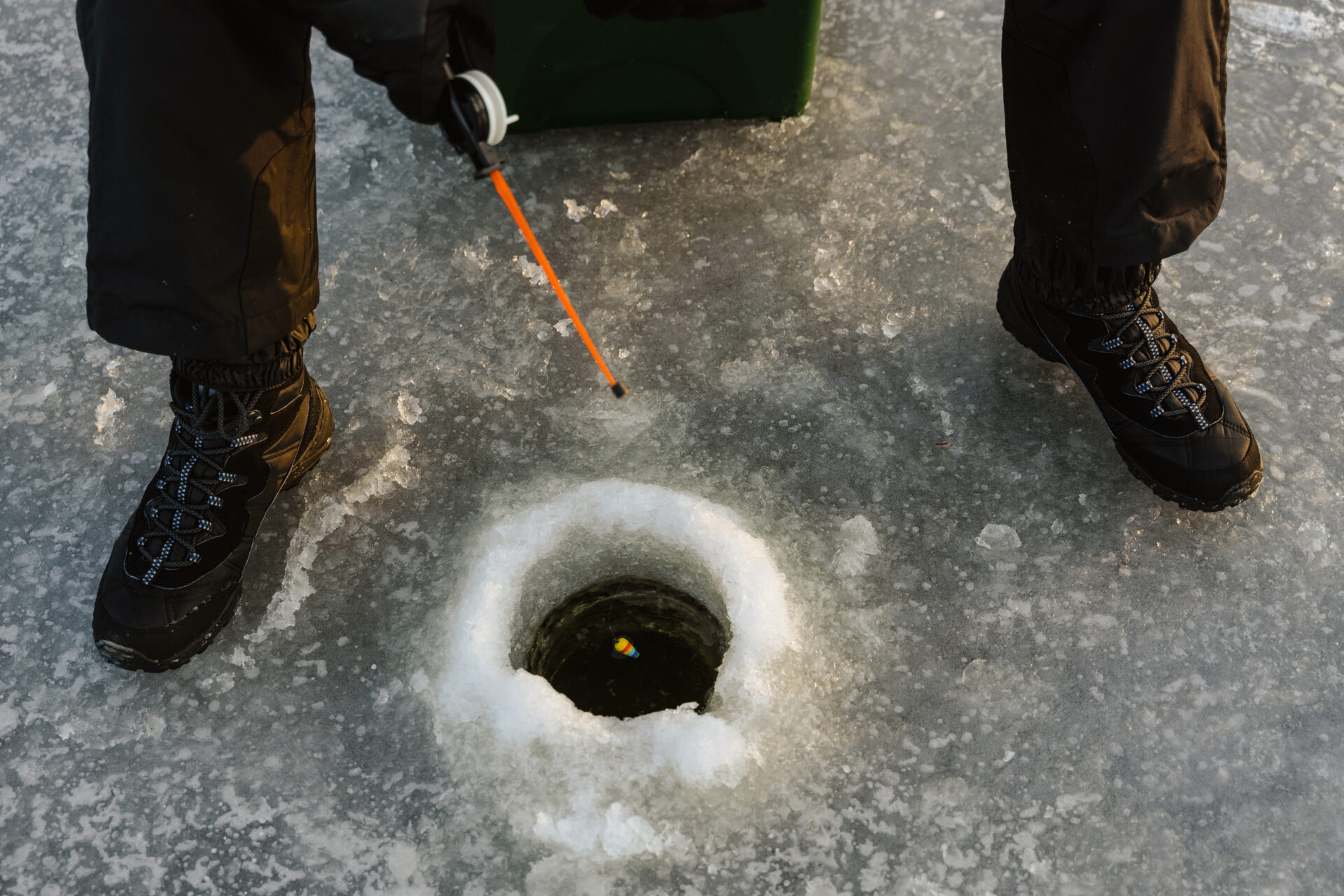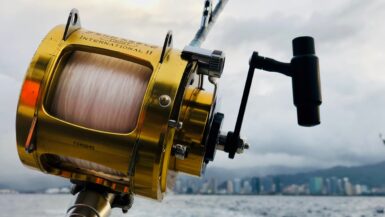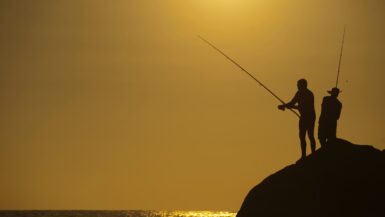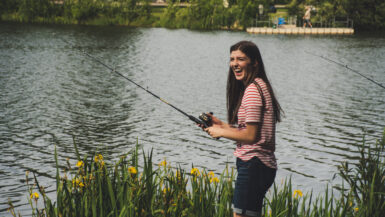Fishing for walleye in freshwater is an exciting and rewarding activity for anglers of all levels. Walleye are a prized species that require good technique and the right equipment to maximize your chances of success. This article provides valuable information on walleye fishing tips and techniques, as well as an overview of the types of freshwater environments where you are most likely to find walleye. With the right knowledge and preparation, you will be able to land the walleyes of your dreams.
Preparation and Gear
Fishing for walleye in freshwater requires a special gear setup to be effective. A medium-weight spinning rod with a length of around 6.5 to 8 feet is typically recommended, and the reel should be chosen with a high gear ratio and a moderate drag. Line should be light enough to allow for sensitivity, but strong enough to break up weeds. Monofilament lines are ideal for casting and dragging lures across the bottom, while braided lines can be used for trolling.
Choose Lures and Bait
Walleye are known to be a bit finicky when it comes to bait selection. For the most effectiveness, use the types of baits and lures that the species is attracted to in the local waters. Crankbaits, spinners, jigs, and live bait like minnows are all great options for walleye fishing. Colors and sizes can be used to adjust the presentation of the lure based on the mood of the fish.
Know the Best Time of Day to Fish
When fishing for walleye in freshwater, it is important to consider the time of day when you are out on the water. Walleye are generally more active at night during the summer months and during early morning and late afternoon hours during the spring and fall. This is when the fish are more active and feeding more actively.
Find the Right Spot in the Water
To increase your chances of catching walleye, it pays to be choosy about the spots you decide to fish. Walleye are found in many different parts of a lake or river, but they are especially fond of deep drop offs, rock piles, and weed beds. They also typically congregate in areas where there is an abundance of food, so keep an eye out for baitfish. The clearer the water, the better, as walleye can be easily spooked by too much disturbance.
The Right Attitude Can Improve Your Chances
One of the most important things to remember when fishing for walleye in freshwater is to remain patient. Walleye fishing can require many hours on the water before a successful catch, and it is important to remain focused and positive. Fish in different areas and adjust your tactics until you find a successful pattern.
Lures and Baits
When fishing for walleye, choosing the right bait is key. In freshwater, live bait is typically the best bet, as walleye are most attracted to life-like presentations. Popular lures and baits for walleye include live minnows, leeches, nightcrawlers, and small-sized crankbaits. Crankbaits can be used in a variety of colors, depending on the water clarity, and should be adjusted according to depth and current.
Jigging Techniques
The most popular technique used for freshwater walleye fishing is jigging. This technique involves using a lightweight jig, usually tipped with a live bait, and a spinning reel. Jigging is a great way to target walleye that are holding in deeper water, as the jig’s weight allows it to reach deeper depths than most other lures. Jigging should be done slowly with an up and down motion, allowing the jig to hit the bottom and then swim back up to the surface.
Fishing With Spoons
Spoons are a popular choice for walleye fishing, as they are extremely versatile and can be used in a variety of water depths and conditions. Spoons come in a variety of sizes, shapes and colors and can be used for trolling or casting. Spoons are most effective when used with a slow-pulling, steady presentation.
Fishing with Plastics
Using plastic baits to target walleye has become increasingly popular in recent years. Soft-plastics are usually used on a jigging head and can be worked by jigging or casting. Some popular soft-plastics to use include twister tails, grubs, and curly tails. Plastics can be used in a variety of colors, depending on the water clarity, and can be fished in depths ranging from shallow to deep.
Understanding Water Temperature and Structure
When it comes to fishing for walleye, it is important to remember that they are cold-water fish, and thus prefer cooler water temperatures. Walleye are also known to be structure-oriented fish, so finding structure such as points, stumps, rocks, weeds, and drop-offs is essential for success. By understanding the water temperature, structure, and the type of bait that is being used, anglers can begin to get a better understanding of how walleye move and feed in the water, and why certain baits are better suited for certain areas than others.
Location and Environment
When fishing for Walleye in freshwater, anglers should consider which environments will offer the best opportunities. Walleye prefer cooler waters and are a highly migratory species, which means they prefer to move around frequently. Look for streams and rivers with deeper, cooler waters, rocky or gravel bottoms, and large schools of baitfish. Walleye also tend to find areas where submerged logs, weeds, and other vegetation provide shelter and food. Ponds, lakes, and reservoirs are excellent Walleye fisheries.
Seasonal Considerations for Walleye Fishing
The seasons can influence Walleye behavior, too. Many anglers will find that winter and spring are the prime times for catching Walleye. Fish tend to bite more aggressively when the water is cool because it concentrates their metabolism. During the summer and fall, anglers can still have success by monitoring the water’s temperature and shifting their methods according to the water’s temperature.
Optimal Techniques for Catching Walleye
Once you’ve found the ideal location, you’ll need to use the right techniques to catch Walleye. Spinning and trolling are the most popular tactics for catching Walleye. Live bait, such as worms, leeches, and minnows, is usually the most effective. Jigs, grubs, spoons, and crankbaits should also be considered. It’s important to keep the bait moving and adjust the speed to match the water’s temperature. Most anglers prefer to use a light action rod with 4 – 8-pound test line for Walleye fishing.
Equipment for Walleye Fishing
When targeting Walleye, it’s important to equip yourself with the proper tackle and equipment. Select a good quality rod and reel combination that is suited for the type of fishing you plan to do. Monofilament or braided line should be used for spinning or trolling. A selection of different jigs, lures, and baits should be carried so you can adjust your technique according to water conditions. Other items such as nets, pliers, and a fillet knife should also be included in your tackle box.
Takeaways From Fishing for Walleye
Whether you’re a beginner or experienced angler, fishing for Walleye in freshwater can be an exhilarating and rewarding experience. When embarking on a Walleye fishing adventure, remember to find the right environment, use the right technique, select the right bait, and make sure you have the right equipment. If you follow these tips and techniques, you’ll be sure to have a great day of fishing for Walleye.
Techniques for Catching Walleye
When fishing for walleye in freshwater, the first step is to know where to find them. This can be complicated, as walleye can be found in a variety of habitats depending on the season and the temperature of the water. Generally, walleye prefer cooler waters and can be found in deeper pools or near rock ledges and drop offs. Additionally, walleye will often school around areas where there is a lot of aquatic vegetation, as the food source helps attract them.
The Right Equipment for Walleye Fishing
The second step to successful walleye fishing is having the right equipment. Obviously, a good rod and reel is essential, as well as a quality line and hook. Many anglers use a spinning reel for targeting walleye in freshwater, as this allows for more accurate casting with lighter lures. Additionally, it is important to have the right lures for walleye, such as jigs and soft plastic baits. There is a lot of debate on what the best lures and techniques are for catching walleye, so it is important to do some research to find the best combinations for the particular lake or stream you are fishing.
Techniques for Fishing Walleye
When it comes to techniques for catching walleye, it is important to keep in mind that they are aggressive predators and will strike lures that are presented properly. In general, walleye will respond to lures that are presented in a slow, steady manner, often with a stop-and-go action. Additionally, walleye can be successfully caught using a wide variety of baits and lures, such as jigs, crankbaits, minnows, and nightcrawlers. It is important to experiment with different baits and lures as well as different retrieves and speeds to determine which is most effective for the particular lake or stream.
Jigging for Walleye
One of the most productive and popular ways to catch walleye in freshwater is by jigging. This involves attaching a jig to the line and casting it out into the water. Then, the angler retrieves the jig in a jerking motion, with occasional pauses during the retrieve. This attracts walleye and triggers a strike, as they often mistake the jig for a prey item. Also, jigs can be fished vertically at the bottom of the lake or stream, which is a very effective way to catch walleye.
Trolling for Walleye
Trolling is another popular method for catching walleye, and can be very effective in the right conditions. This technique involves using a boat to slowly pull lures or bait behind it. It is important to vary the speed of the trolling to find the most effective speed for the particular location. Additionally, it is important to have the right lures and bait for trolling, as the shape and color of the lure can make a difference in the success rate.
Increased Success on Your Next Fishing Trip
By following the tips and techniques outlined in this article, your next fishing trip should be a successful one! This article focused on fishing for walleye in freshwater. When fishing for walleye, it is important to use the correct equipment, bait, and technique. When fishing in shallow water it is important to use a smaller, light weight jig with a smaller bait. If the walleye are located in deeper water, using a crankbait or jigging spoon can be effective. Additionally, it is important to be aware of the weather conditions, water temperature, and time of day in order to locate the fish. Knowing the spawning areas and habitat preferences of the walleye can increase your chances of catching a dinner-sized walleye. By utilizing the tips and techniques discussed in this article, your next freshwater walleye fishing trip should be a successful one.





Leave a reply